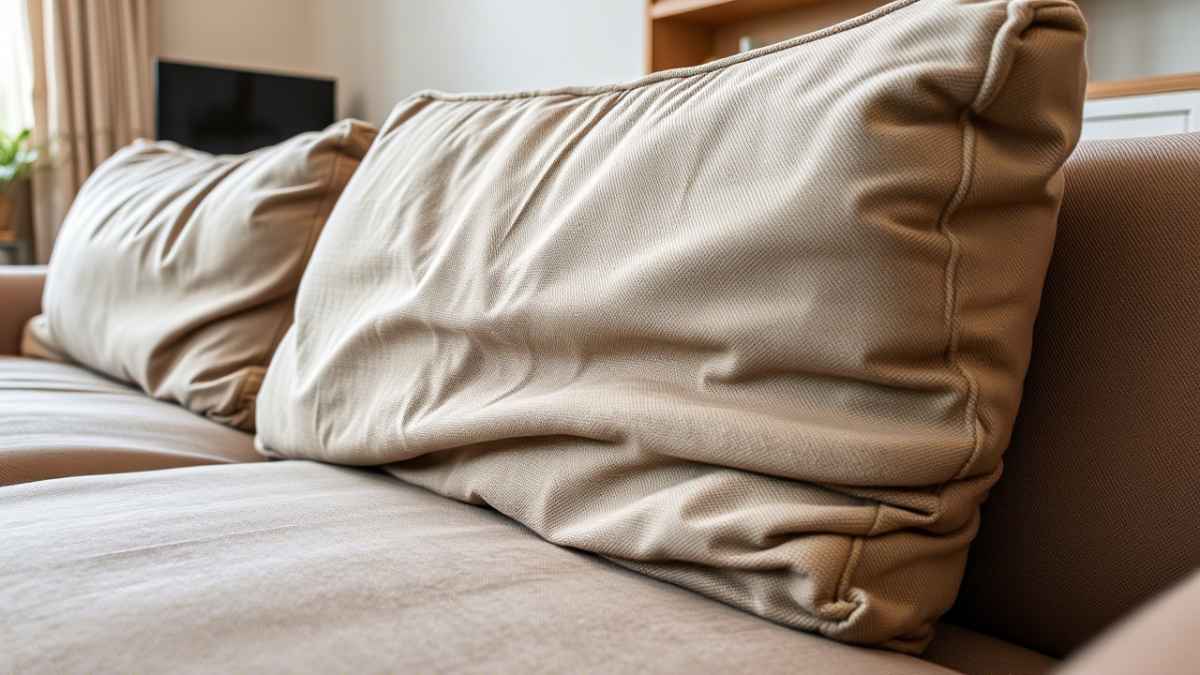Introduction
A sagging couch can turn your relaxing space into an uncomfortable spot. Whether your sofa is sinking due to worn-out cushions, broken springs, or a weakened frame, you don’t need to replace it just yet. This guide will walk you through simple DIY fixes to restore your couch’s support, comfort, and durability.
Common Causes of a Sagging Couch
Before jumping into repairs, it’s essential to identify the root cause of your sagging couch:
1. Worn-Out Cushions
Over time, foam and fiberfill inside the cushions compress, causing them to lose shape and support.
2. Broken or Loose Springs
Most sofas use sinuous (S-shaped) or coil springs that can wear out, snap, or become loose.
3. Weak or Broken Frame
A wooden or metal frame can weaken or crack, making the couch sag in specific areas.
4. Missing or Damaged Support Webbing
Some couches have webbing beneath the cushions that can stretch out over time, reducing support.
How to Fix a Sagging Couch
Now that you know the possible causes, let’s go through the best DIY repair solutions.
1. Replacing or Reinforcing Couch Cushions
Check Cushion Condition
- Remove the cushions and inspect for compressed foam or flattened fiberfill.
- If the cushions feel soft and lifeless, they need more filling.
Solution: Refill or Replace Foam
- Buy high-density foam (at least 2.5 lbs/cubic foot) for durability.
- Remove the cushion cover and insert new foam.
- If the cushions have zippers, add extra polyfill to improve firmness.
2. Fixing Broken or Weak Springs
Inspect the Springs
- Remove the dust cover from the bottom of the couch.
- Look for broken or loose springs.
Solution: Repair or Replace Springs
- Use pliers to reattach any displaced springs.
- If a spring is broken, replace it with a similar one from a hardware store.
- Consider adding zip ties or heavy-duty staples to reinforce weak springs.
3. Strengthening the Couch Frame
Inspect the Frame
- Look for cracks, loose joints, or weak plywood.
- If the frame is wobbly, it needs reinforcement.
Solution: Reinforce the Frame
- Use wood glue and clamps for small cracks.
- Add wooden boards or plywood sheets under the couch for additional support.
- Secure loose joints with screws or metal brackets.
4. Replacing or Reinforcing Webbing
Check the Webbing
- Remove cushions and check if the webbing is stretched out or torn.
Solution: Install New Webbing
- Buy heavy-duty jute or elastic webbing.
- Remove old webbing using pliers and a screwdriver.
- Staple new webbing in a crisscross pattern for maximum support.
5. Using a Couch Support Board
If a quick fix is needed, a couch support board can provide immediate relief.
- Purchase a pre-made support board or cut plywood to fit under the cushions.
- Place the board between the frame and cushions to improve firmness.
6. Flipping and Rotating the Cushions
Regularly flipping and rotating cushions can help distribute wear and maintain even support.
Preventing Future Sagging
To keep your couch in great shape, follow these maintenance tips:
- Rotate and fluff cushions weekly.
- Avoid excessive weight on one area of the couch.
- Inspect the frame and springs yearly.
- Add extra padding or support boards before sagging becomes severe.
Conclusion
Fixing a sagging couch doesn’t require professional help. Whether you replace the cushions, reinforce the frame, or repair springs, these DIY solutions can bring your sofa back to life. With proper care, you can extend the lifespan of your couch and enjoy better comfort for years to come.
FAQs
1. How do I know if my couch cushions need replacing?
If the cushions feel flat, offer no support, or don’t regain shape after sitting, it’s time for replacement.
2. Can I fix sagging couch springs without professional tools?
Yes, you can use pliers, zip ties, or replacement springs from a hardware store.
3. What is the best material for couch cushions?
High-density foam (2.5 lbs/cubic foot or higher) provides the best durability and support.
4. Is it worth fixing an old sagging couch?
If the frame and structure are intact, repairing is more cost-effective than replacing.
5. How can I make my couch firmer without replacing cushions?
Adding a couch support board or extra polyfill can improve firmness without replacing cushions.
6. How often should I rotate my couch cushions?
Rotate and flip cushions at least once a month to distribute wear evenly.
7. Can plywood help fix a sagging couch?
Yes, placing a plywood board under the cushions provides immediate support.
8. How can I prevent my couch from sagging in the future?
Regular maintenance, cushion flipping, and adding reinforcements can prevent sagging over time.
